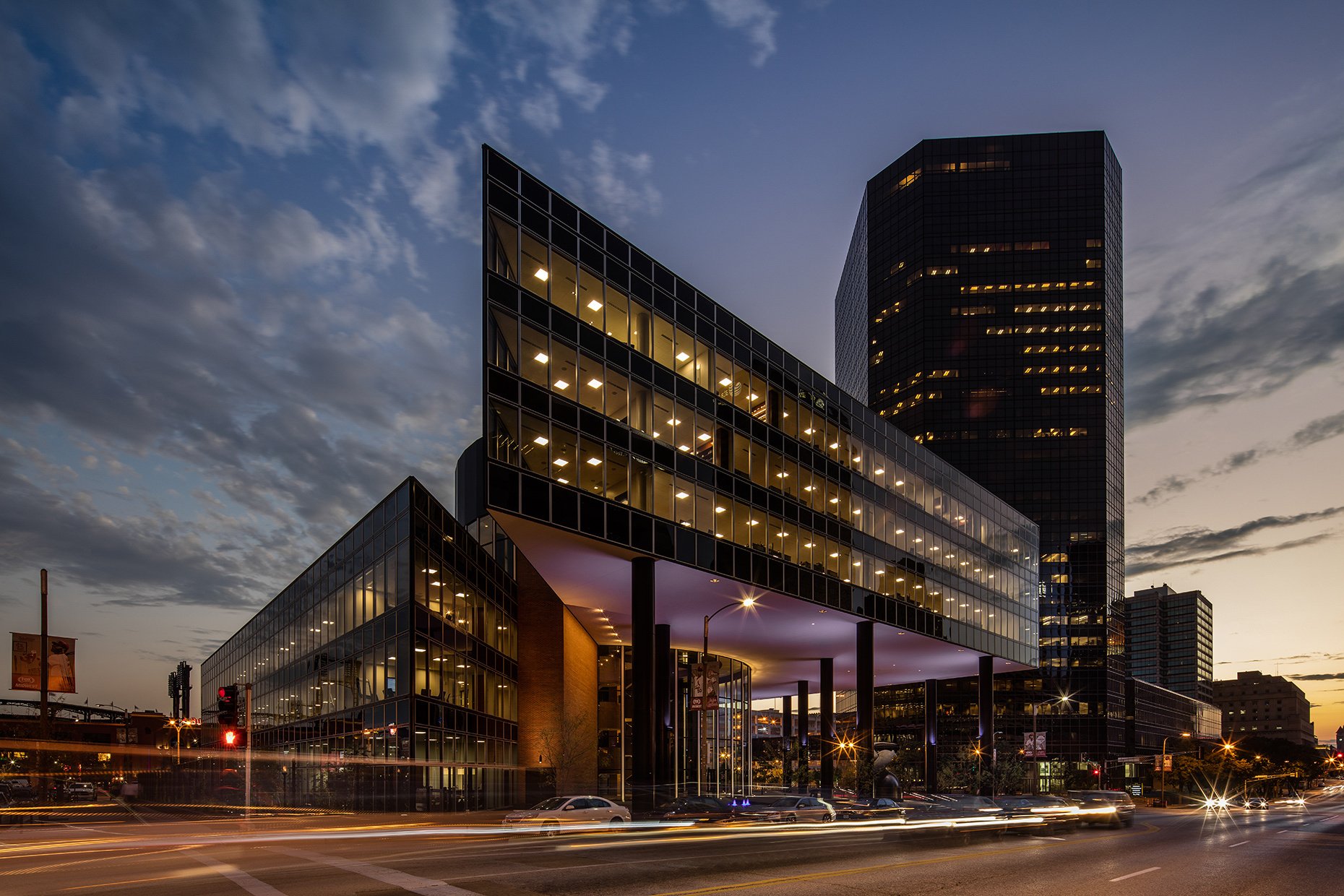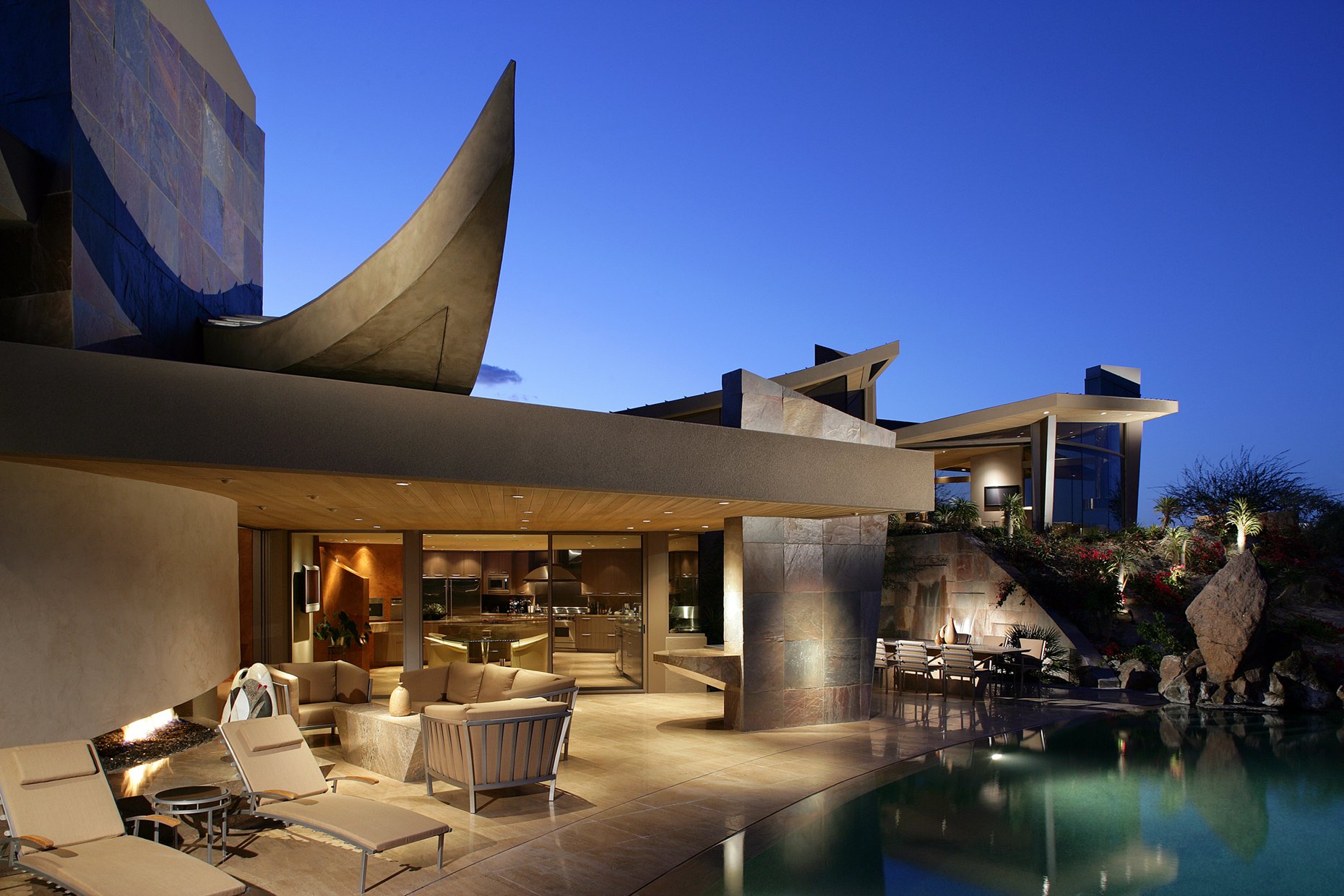The Art and Science of Building: Seeing the World Differently
Bob Clark has built one of the country’s largest construction firms; Matt McFarland documents the art in that architecture.
by Craig Kaminer / Photos courtesy of Matt McFarland
Bob Clark, the founder and executive chairman of Clayco, has always been captivated by the aesthetics of construction.
"I am really interested in how things look," Clark says, reflecting on his journey from a start-up to now one of the top builders in the United States. From the outset, he was determined to transform job sites, which were often chaotic and unkept. He started by visiting the sites and having the trailers painted gray and adorned with the company logo and its earliest motto "Construction Success."
His commitment went beyond mere appearances; Clark would pick up trash at night, ensuring that cleanliness was a standard. This dedication to a pristine environment once led a representative from one of Clayco’s competitors to question why Clayco would "waste clients' money on a clean job site." To Clark, the answer was simple: Quality matters.
700 Market Office Building Downtown, St. Louis.
Clark’s insistence on perfection extended to every aspect of the job. "Our concrete curbs were perfect, our sidewalks flawless," he recalls. Superintendents were even instructed to rip out sidewalks if they did not meet his exacting standards. The rigorous attention to detail became a hallmark of the brand. "Expressing the quality of our work in our branding and marketing was crucial," Clark states. This ethos led to the adoption of the company motto, "The Art and Science of Building."
While not Clayco’s exclusive photographer, McFarland helped define the Clayco brand on film. "The brand is an extension of the personality and culture of the business," Clark says. His admiration for construction and architecture companies, inspired by iconic mentors like architect Robert Boland, played a significant role in shaping his vision. "The Mercantile bank branches we built in St. Louis almost 40 years ago look timeless," Clark notes, underscoring his appreciation for enduring design.
For Clark, success was not just about being a great contractor but also about building a reputable business.
"Winning customers and recruiting team members became critical to our DNA," he says. Photography, particularly, was an area where Clark invested heavily. Publications like Commerce Magazine featured their work, including the striking CyberTel (silver bullet) building accompanied by the bold slogan, "Bet on us."
Meeting McFarland was serendipitous. While photographing a stadium for Arcturis, McFarland's eye for detail caught Clark's attention. Hired to shoot the first Centene building in 2008, McFarland’s shot of Bob’s hard hat remains a staple in Clayco’s image library. From there, he went on to photograph other Clayco projects like Express Scripts, Johnson & Johnson, Centene and even Clark’s Colorado ranch in Old Snowmass.
"Matt was the first photographer to capture the essence of the art and science of architecture," Clark remarks. McFarland's work evolved alongside Clayco’s portfolio, making him the best photographer for on-site construction. He learned how things were built and mastered capturing the perfect light. His photography transcended mere documentation; it showcased the process, the people, and the intricate beauty of construction and cranes.
The thousands of images McFarland has taken are more than mere records; they are motivators.
"The images help people become part of the Art and Science," Clark explains. By featuring workers as the stars in these photos, they become celebrities, fostering a sense of pride and belonging.
Clark's passion for architecture extends to his personal life as well. He recently purchased an architecturally significant 1957 Donald Wexler home in Rancho Mirage. “It’s not just our home; it’s a work of art," he says.
Personal residence and project, Baja, California.
Reflecting on Clayco's success, Clark credits "the incredible people who built the brand," their dedication and a burning desire to excel. The diversity within the company, with team members speaking 46 languages, enriches the culture. "We never try to change them; we want them to change us," Clark says, highlighting the inclusive and evolving nature of Clayco.
Worker installing floating stairwell framework, Centene project, Charlotte, South Carolina.
In Bob Clark's journey, Matt McFarland's photography has played an indispensable role. Together, they have showcased the art and science of building, making every project a testament to quality, beauty and the remarkable people behind them.
McFarland's foray into photography began in his early teens when his mother, an interior designer, gifted him his first camera. Equally, his dad influenced McFarland's business acumen; together they found and developed his first studio in an undiscovered area in Kansas City, now known as the very popular Crossroads district.
His fascination with buildings started on the West Coast from the mid-century modern homes in Palm Springs to the clean architecture while living on Camelback Mountain. McFarland’s talent was evident early on. His photos captured not just structures but the stories they told. After getting his BFA from the Kansas City Art Institute, he began his professional career, quickly gaining recognition for his unique perspective and technical skill.
Private residence, Madison Club, LaQuinta, California.
Private residence, Madison Club, LaQuinta, California.
Bob Clark's path to success was equally remarkable. Raised in St. Louis, Clark was always interested in how things were built and started Clayco in 1984. From the outset, Clark's goal was to revolutionize the design-build process by emphasizing efficiency, innovation and quality. Under his leadership, Clayco grew from a small startup to a powerhouse in the construction industry.
Given their mutual dedication to architecture, the intersection of McFarland and Clark's careers was inevitable. They first met in the early 2000s. Clark was immediately impressed by McFarland’s portfolio, recognizing a kindred spirit who saw buildings as more than just structures but as living, breathing entities. The two quickly struck up a conversation.
As McFarland and Clark's friendship grew, so did their professional relationship. Clark frequently commissioned McFarland to photograph Clayco’s projects. These assignments were not merely about documenting buildings but capturing the essence of the corporate vision: spaces that were innovative, functional and aesthetically pleasing.
Concrete tilt-up bracing install, Atlanta, Georgia.
Worker setting pre-pound concrete ceiling, Georgia.
One of their most notable collaborations was the Centene Plaza in Clayton. This project, a flagship for Clayco, showcased the company's ability to seamlessly blend design and functionality. McFarland’s photographs did more than highlight the building’s architectural features; they conveyed the vibrancy and dynamism of the space. His images captured the interplay of light and shadow, the texture of materials, and the interaction of people with the space, bringing the building to life in a way that resonated with viewers.
MStudio West on set using the work van as a shooting stage.
Their work together isn’t limited to large-scale projects. Clark appreciated McFarland’s ability to find beauty in smaller, often overlooked details. Whether it was the intricate design of a staircase or the way natural light filtered through a window, McFarland's eye for specific designs complemented Clayco's commitment to excellence in every aspect of their projects.
For McFarland, photography has always been about storytelling. Each image is a narrative, capturing a moment in time and the essence of its subject. His approach to architectural photography is no different. From their design and construction to the lives unfolding within those walls, McFarland believes those buildings have stories to tell. Working with Clayco allowed McFarland to explore these narratives. He spent time on-site, observing the construction process, interacting with architects and builders and understanding the vision behind each project. This immersive approach enabled him to create images that are visually stunning but also rich with context and meaning.
McFarland says, “One of my most memorable experiences working with Clayco was during a three-day video shoot documenting a crane jacking in Clayton. The jacking was one of the few happening in the U.S. of its type. I was perched out on a catwalk with 25 knots of wind blowing about 16 stories up.
The friendship between McFarland and Clark is about more than professional collaboration; it’s also about mutual inspiration. Clark often speaks of how McFarland’s work has changed the way he sees his own projects. Through McFarland’s lens, Clark has gained a deeper appreciation for the aesthetic and emotional impact of his buildings.
Conversely, McFarland draws inspiration from Clayco’s commitment to pushing the boundaries of design and construction. He admires Clark’s willingness to take risks and innovate, qualities that resonate with his own approach to photography. As McFarland and Clark continue to shape their respective fields, their friendship remains a cornerstone of their success. Their partnership has produced some of the most iconic architectural images of our time, capturing the essence of modern urban landscapes.
"Water sports has shaped me into who I am,” McFarland says. “I find peace, serenity and creativity while practicing my wind sports on a body of water whether ocean, lake or river. I learned to surf at age 8. I watch pro surfers every day just as others watch the Cardinals. As I got older, I transitioned to first windsurfing, kiteboarding and now wing foiling. The energy of the wind blowing 20 to 30 knots is a creative outlet for me both creatively and physically. Wind sports have taken me to places I would never have gone. The same is true for Clayco."
Private residence, Wexler Architect, Rancho Mirage, California.
Private residence, Wexler Architect, Rancho Mirage, California.
Looking to the future, both men are committed to furthering their legacy. For McFarland, it means continuing to push the boundaries of architectural photography, exploring new techniques and technologies to tell even more compelling stories. For Clark, it means driving Clayco forward, embracing new challenges and constantly seeking ways to improve the built environment.
Their story is not just about buildings and photographs but about the power of partnership and the impact it can have on the world.
Matt McFarland in his happy place.
In an industry where the tangible often takes precedence, the intangible bond between McFarland and Clark serves as a beacon. It highlights the importance of relationships in achieving greatness. Through their combined efforts, they have shown that architecture and photography are not just about structures and images but about capturing and creating stories that both inspire and endure.

















